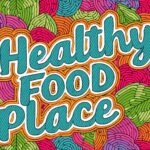Garlic has been celebrated for centuries not only for its distinctive flavor but also for its remarkable health benefits. Rich in antioxidants, garlic is often touted as one of the healthiest foods you can include in your diet. Let’s delve into why garlic is considered a powerhouse of nutrition and how it can contribute to your overall well-being.
Nutritional Profile of Garlic
Garlic is low in calories yet high in essential nutrients. A single clove of garlic contains:
- Manganese: 2% of the RDI
- Vitamin B6: 2% of the RDI
- Vitamin C: 1% of the RDI
- Selenium: 1% of the RDI
- Fiber: 0.06 grams
- Calcium, Copper, Potassium, Phosphorus, Iron, and Vitamin B1 in small amounts
Antioxidant Properties
1. Allicin:
- Active Compound: The primary bioactive compound in garlic is allicin, which forms when garlic is chopped, crushed, or chewed.
- Antioxidant Effects: Allicin helps reduce oxidative stress by neutralizing free radicals, thus protecting cells from damage and reducing the risk of chronic diseases.
2. Sulfur Compounds:
- Detoxification: Sulfur compounds in garlic aid in detoxification processes, supporting liver function and helping the body eliminate toxins.
- Immune Boosting: These compounds also enhance the immune system, making it more effective at fighting off infections and illnesses.
3. Flavonoids:
- Anti-inflammatory: Garlic contains flavonoids that exhibit anti-inflammatory properties, which can help reduce inflammation and lower the risk of inflammatory diseases.
Health Benefits
1. Cardiovascular Health:
- Blood Pressure: Studies have shown that garlic can help lower blood pressure in individuals with hypertension.
- Cholesterol Levels: Garlic has been found to reduce total and LDL cholesterol, while raising HDL cholesterol, which is beneficial for heart health.
- Blood Clotting: Garlic’s anti-coagulant properties can help prevent the formation of blood clots, reducing the risk of heart attacks and strokes.
2. Cancer Prevention:
- Anti-carcinogenic: The antioxidants in garlic can help neutralize free radicals that cause cellular damage, which is a key factor in cancer development.
- Studies: Some studies suggest that garlic consumption is associated with a reduced risk of certain cancers, including stomach and colorectal cancers.
3. Immune Support:
- Antimicrobial: Garlic has natural antibacterial, antiviral, and antifungal properties, making it effective in preventing and treating infections.
- Immune Modulation: Regular consumption of garlic boosts the immune system, helping the body ward off pathogens more efficiently.
4. Anti-inflammatory Effects:
- Chronic Diseases: By reducing inflammation, garlic can help manage and prevent chronic diseases such as arthritis, diabetes, and certain cardiovascular conditions.
How to Incorporate Garlic into Your Diet
1. Raw Consumption:
- Raw Cloves: Eating raw garlic cloves can maximize the health benefits. Aim for one to two cloves daily.
- Garlic Paste: Minced garlic can be added to dressings, spreads, and dips.
2. Cooked Dishes:
- Sautéed Vegetables: Add chopped garlic to your favorite vegetables while sautéing.
- Soups and Stews: Garlic can enhance the flavor and nutritional value of soups and stews.
- Roasted Garlic: Roasting garlic mellows its flavor and makes it easy to spread on bread or mix into mashed potatoes.
3. Supplements:
- Garlic Capsules: If you find the taste or smell of garlic overwhelming, garlic supplements are an alternative way to reap its benefits.
Conclusion
Garlic is a versatile and potent antioxidant food that offers a myriad of health benefits. From boosting immune function to improving cardiovascular health and reducing cancer risk, incorporating garlic into your diet can significantly enhance your well-being. Embrace this natural wonder in your daily meals and enjoy its numerous health-promoting properties.
